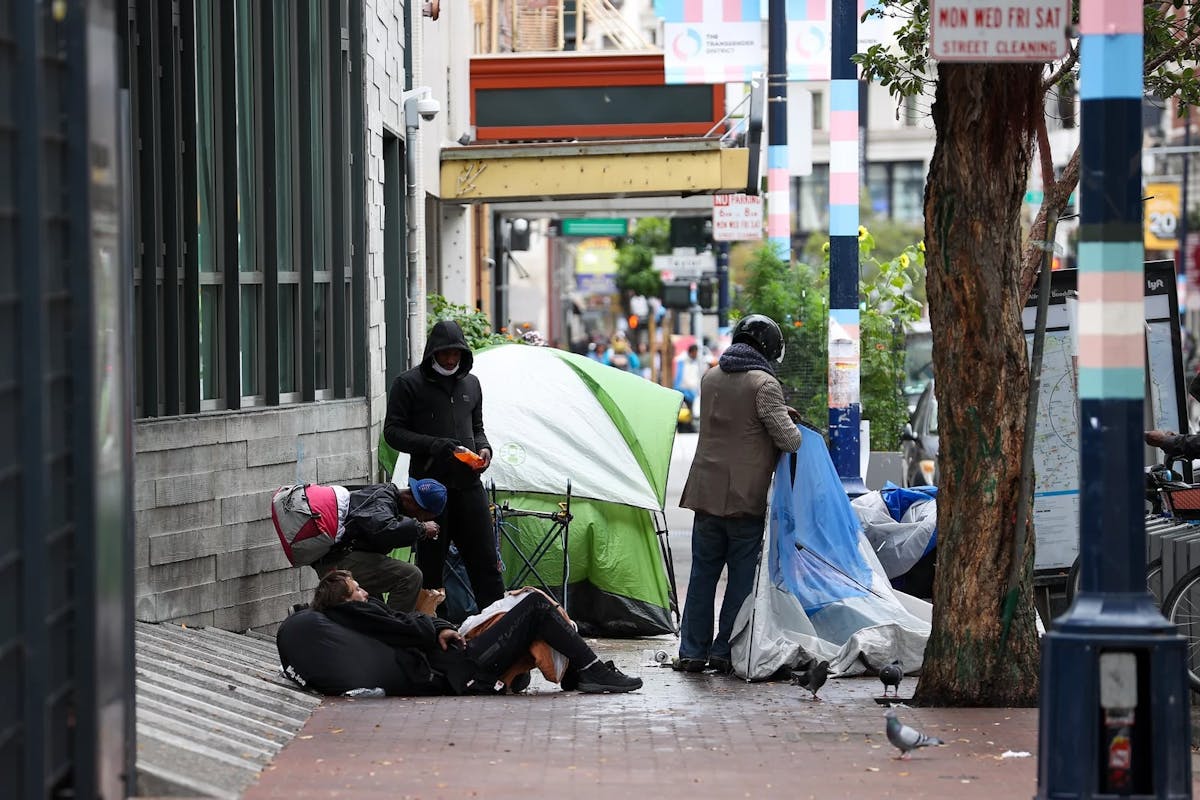Despite San Francisco’s Aggressive Crackdown on Fentanyl Dealers and Open-Air Drug Use, City Finds a Record Year for Overdose Deaths
Joint federal, state and city efforts have swept more drug dealers off the streets, but ‘they are rapidly replaced because the demand remains.’

Open-air drug dealing is rampant in San Francisco’s troubled downtown – particularly in the notorious Tenderloin and South of Market neighborhoods. Officials at the local, state and federal levels have been working to curb this criminal activity, but some residents still remain skeptical about the progress being made.
Last year, City Hall made the controversial decision to enact a new surveillance program allowing San Francisco police to use real-time camera footage to arrest suspected fentanyl dealers. Then, Mayor London Breed announced a partnership with California’s Governor, Gavin Newsom, in April “to enhance resources to help combat San Francisco’s deadly fentanyl crisis” by bringing in the California Highway Patrol and the California National Guard. Come June, the Drug Market Agency Coordination Center was launched.
This fall, city and state police partnered with the FBI; the Drug Enforcement Administration; the Bureau of Alcohol, Tobacco, Firearms, and Explosives; and other federal agencies for “All Hands on Deck” – an initiative working to combat street-level drug dealing and trafficking in the city. And December saw the start of the city’s new wastewater testing initiative which allows the San Francisco Department of Public Health and the San Francisco Public Utilities Commission to test for substances like fentanyl “to track trends and inform response activities.”
In other words, action is being taken. But action is only deemed effective if progress is being made.
“There are a lot of resources being put into the Tenderloin, and yet, the outcome remains the same — open-air drug dealing, stolen good markets and loitering,” Rhiannon Bailard, chief operating officer for UC College of the Law San Francisco, told the Chronicle
In a recently released update on the city’s multi-agency initiative to take down open-air drug markets, the city government announced that hundreds of arrests have been made for drug sales and open air drug use. Hundreds of wanted fugitives have been arrested in the Tenderloin and South of Market, and 148 kilos of narcotics were seized, including more than 80 kilos of fentanyl.
Even still, 2023 will be the deadliest year for accidental drug overdose deaths in San Francisco with 752 deaths from January through November. December’s numbers should bring the devastating total even higher than 2020’s 726 deaths. One recovery advocate, Tom Wolf, in an interview with the Sun, called it “a massive die-off.”
So what do people think of the aggressive new posture towards the fentanyl crisis? It depends on who you ask.
Heather Milano, a 47-year-old homeless woman, expressed her dismay over the increasing number of user arrests. She is a user herself.
“It’s not like San Francisco anymore. It’s like how other cities treat people, and it’s sad,” she told the Chronicle. “Now it’s like, you’re bum-rushed by the police at every corner, and most of us are disabled, just trying to find somewhere to get out of that pain.”
A local hotel manager named Isabel Manchester, on the other hand, seems pleased with some of the progress being made.
“I love to see the police,” she said, adding that she’s noticed fewer dealers lately. “They’re doing a good job, I think, of cracking down, and when they’re here, it’s great but they’re not consistently here.”
But the Assistant Chief Attorney at the San Francisco Public Defender’s Office, Angela Chan, said this year’s record number of overdose deaths shows that “the law enforcement crackdown on people caught up in the opioid public health crisis has worsened the crisis.”
“When people who are street-level dealers are taken off the street, they are rapidly replaced because the demand remains. And when people being arrested for public drug use are rounded up and flash incarcerated in jail, they experience grueling withdrawal for a few hours or days at a time, but are largely not connected to treatment,” Chan said in a statement. “Our communities would be safer if those who are arrested for selling drugs were given an opportunity to exit the exploitative drug trade and those who suffer from substance use disorders had low-barrier treatment options in the community.”
U.S. District Judge William Alsup has also voiced criticism for the efforts being made, but for a very different reason. He recently rejected plea deals for Tenderloin fentanyl dealers because the defendants would not serve any jail time. In other words, he thinks prosecutors need to seek harsher penalties for the drug dealers or risk sending “exactly the wrong message” by simply deporting dealers after no prison time.“It’s an open invitation to come to San Francisco to sell fentanyl,” the federal judge wrote in a recent order. “The worst that might happen to a dealer, if apprehended, will be a free trip home with no prison time. Given the cartels’ practice of recruiting its sales force from the same community, word of this extreme leniency will circulate quickly. Instead, the message should be loud and clear — if you come to sell fentanyl in San Francisco, you will go to prison (and then be deported).”

